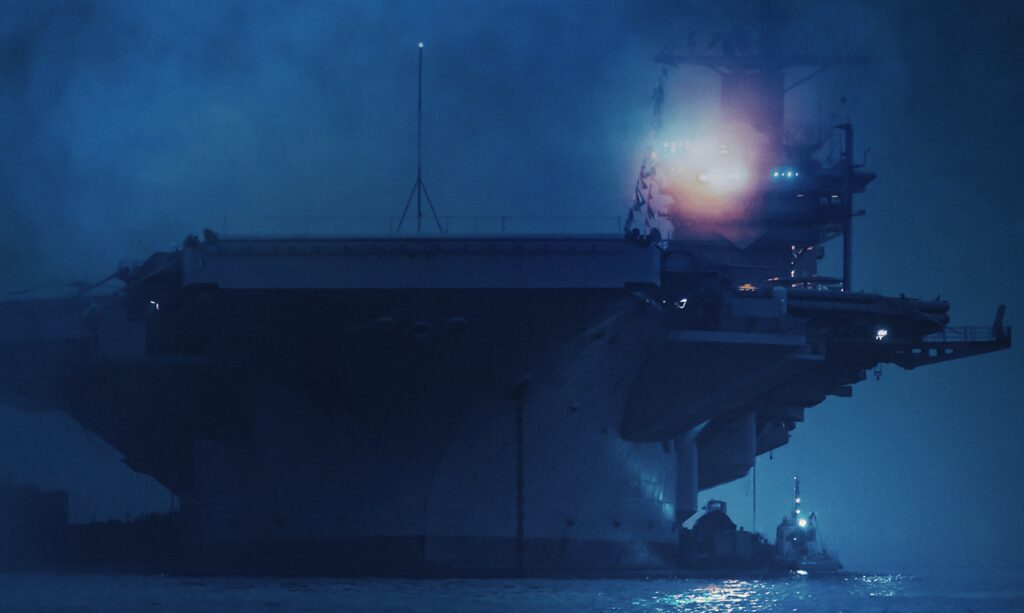This content is an HTML document that provides information on aircraft carriers. It begins by explaining that aircraft carriers are large naval vessels that serve as mobile airbases, allowing for the projection of air power in distant regions. The significance, history, and capabilities of aircraft carriers are discussed in detail. The content highlights the importance of aircraft carriers in modern warfare, their purpose, and their ability to provide a base for aviation assets. It also explores the history and evolution of aircraft carriers, including the development of purpose-built carriers and advancements in aircraft launching and landing procedures. The capabilities and features of aircraft carriers, such as their size, number of aircraft they can carry, and advanced radar systems, are also explained. The content concludes by emphasizing that aircraft carriers are essential tools in modern warfare and will continue to play a crucial role in military operations.
Aircraft Carriers: The Mobile Force Projection Platforms
Aircraft carriers are colossal naval vessels that serve as mobile airbases, enabling the projection of air power thousands of miles away from home shores. These floating airports provide an unparalleled capability to launch and recover various types of fixed-wing aircraft in a wide range of military operations. Let’s delve into the significance, history, and capabilities of these incredible vessels.
Significance and Purpose
Aircraft carriers play a pivotal role in modern warfare, as they provide an extended reach and the ability to rapidly respond to threats in distant regions. These formidable platforms ensure the projection of air power, allowing for effective offensive and defensive operations in both conventional and asymmetrical conflicts.
The primary purpose of aircraft carriers is to provide aviation assets such as fighter jets, bombers, and surveillance aircraft with a base for takeoff and landing. Additionally, these ships can accommodate a diverse array of support staff, maintenance crews, weaponry, and supplies required to sustain extended operations at sea.
By positioning themselves near a conflict zone, aircraft carriers create a mobile presence, enhancing the military’s strategic flexibility. They are designed to provide air superiority, strike enemy positions, support ground troops, conduct maritime interdiction, and perform a variety of other military missions.
History and Evolution
Aircraft carriers emerged in the early 20th century, as naval strategists recognized the potential of utilizing aircraft in the naval context. Initially, carriers were converted from existing ship hulls, such as battleships, to accommodate a runway and a launching mechanism for aircraft. However, the development of purpose-built carriers paved the way for increased capabilities and operational effectiveness.
The first truly purpose-built aircraft carrier was the HMS Argus commissioned by the British Royal Navy in 1918. Since then, aircraft carriers have undergone extensive improvements and advancements in terms of size, speed, and aviation capabilities.
The introduction of steam catapults in the mid-20th century revolutionized carrier operations, enabling the launch of heavier aircraft with higher payloads. Additionally, the development of angled flight decks and aircraft arresting cables facilitated safer and more efficient landing procedures, reducing the risk of accidents and mishaps.
Capabilities and Features
Aircraft carriers boast an array of impressive capabilities to effectively project air power. With their immense size, these vessels can carry a significant number of aircraft, providing the flexibility to respond to various challenges. The most advanced carriers can house over seventy aircraft, including fighters, helicopters, early warning aircraft, and attack aircraft.
One of the primary features of a carrier is the angled flight deck, which allows for simultaneous takeoff and landing operations, optimizing flight operations on the ship. The arresting cables on the deck enable aircraft to safely decelerate and come to a stop after landing at high speeds.
Furthermore, carriers are equipped with advanced radar systems, communication systems, and defensive weaponry to detect and counter any potential threats. They possess sophisticated command and control centers, enabling coordination of operations in collaboration with other naval assets, ground forces, and aerial formations.
Conclusion
Aircraft carriers represent the epitome of mobile force projection platforms. They are essential tools in modern warfare, providing a range of military capabilities that significantly contribute to a nation’s defense and the establishment of regional security. With continuous advancements, these floating airbases continue to evolve, ensuring the projection of air power remains a crucial component of military operations for years to come.
